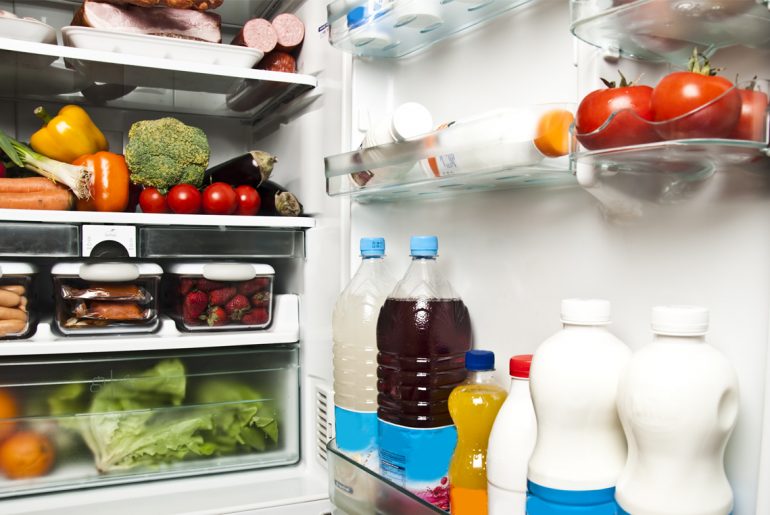Fridge designers are toying with you. While you think the door shelf looks like it was custom fitted to your milk carton, it turns out, milk stored in the door may make you ill. Store milk on a middle shelf, and only use the door to store items that don’t need to maintain a cool temperature.
A well organized fridge is important for safe food storage and also to help you minimize waste. Here are a few tips to from Good Housekeeping UK that will help keep your fridge foods fresher longer.
Ideal temperature: Set your temperature gauge between 33ºF and 39ºF so your food items never warm above 41ºF. Avoid putting food that are still warm from dinner in the fridge as they can cause the temperature to rise and spoil other foods — leading to those unpleasant feelings of food poisoning.
Storage tips: Keep open jars of jam, jelly or condiments refrigerated. Cooked foods should be covered before storing and meats and fish need to be well sealed.
WHAT TO PUT ON YOUR:
Upper shelves: Foods that don’t need cooking. Deli meat and leftovers are good to go here.
Lower/Middle shelves: Dairy. Milk, cheese, yogurt and butter.
Bottom shelf: If you’re wondering what the coldest part of the fridge is, you’ve found it. Since warmer air rises, the bottom shelf is the safest place and will maintain temperature the longest. Keep raw foods here like wrapped raw meat and fish. Keeping these items low also lowers the risk of cross-contamination and dripping on to other foods. Gross!
Drawers: Vegetables, fruits, bagged salad and herbs.
Door shelves: This is the warmest place in the fridge with the greatest temperature fluctuations. Only foods with some natural preservatives should be stored here like juice, jams and condiments.
OTHER STORAGE TIPS:
- Keep raw and cooked foods separate from each other. Cooked items should always go higher than raw foods to avoid spillage.
- Clean your fridge regularly. Bring out the toothbrush for this one. There are tons of little curves and corners that all need your attention.
- Thaw your fridge. This will help avoid unwanted buildups of ice.
- Keep fresh foods away from back of fridge. The back can get very cold and can freeze delicate items like produce or herbs.
- Dairy can be flexible. These don’t need to be in the coldest part of the fridge, so middle shelf or even the door is okay for dairy, milk, butter and soft cheeses.
- Eggs are another curveball. If your fridge came with an egg tray built in to the door, they sadly didn’t read this article first! Eggs need to be kept at a constant temperature so middle shelf is best.
- Getting rid of gas. Certain fruits and veggies eliminate gasses that will make some produce spoil early. Invest in a cute little counter basket and keep bananas, avocados, nectarines, peaches, plums, pears, potatoes and tomatoes out of the fridge.
To read an earlier version, visit Good Housekeeping UK.
Originally published March 6, 2017.
Also see, 8 new Peeps flavors are hatching this spring.





